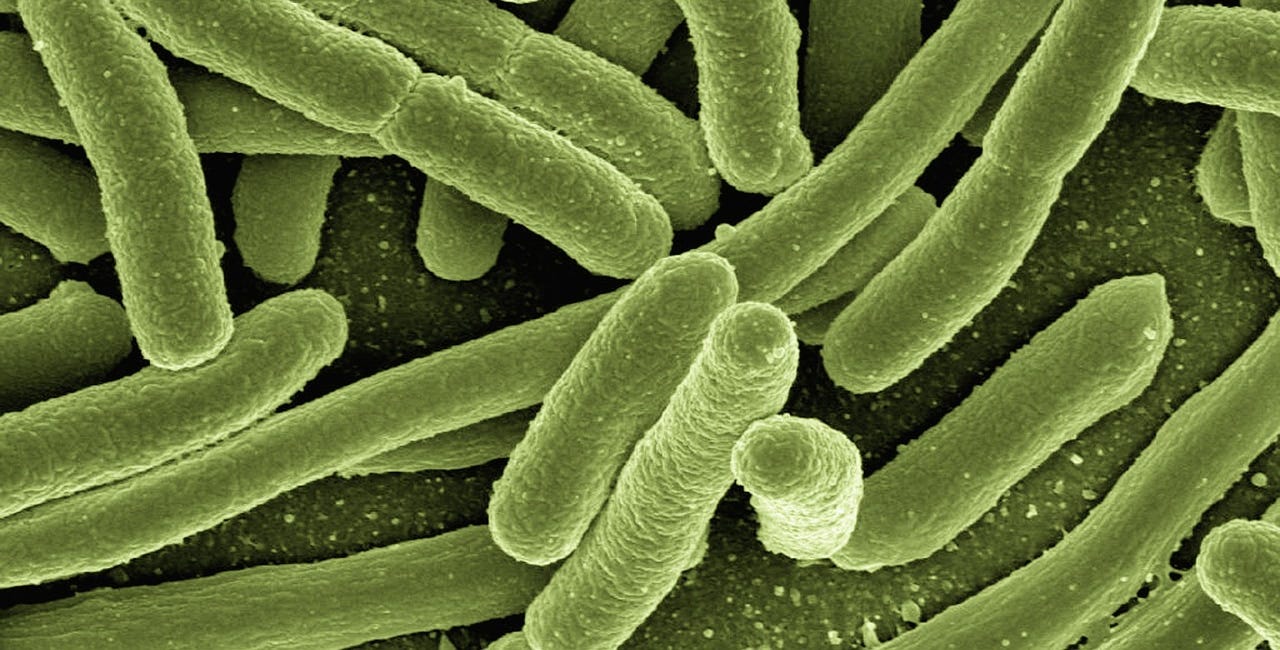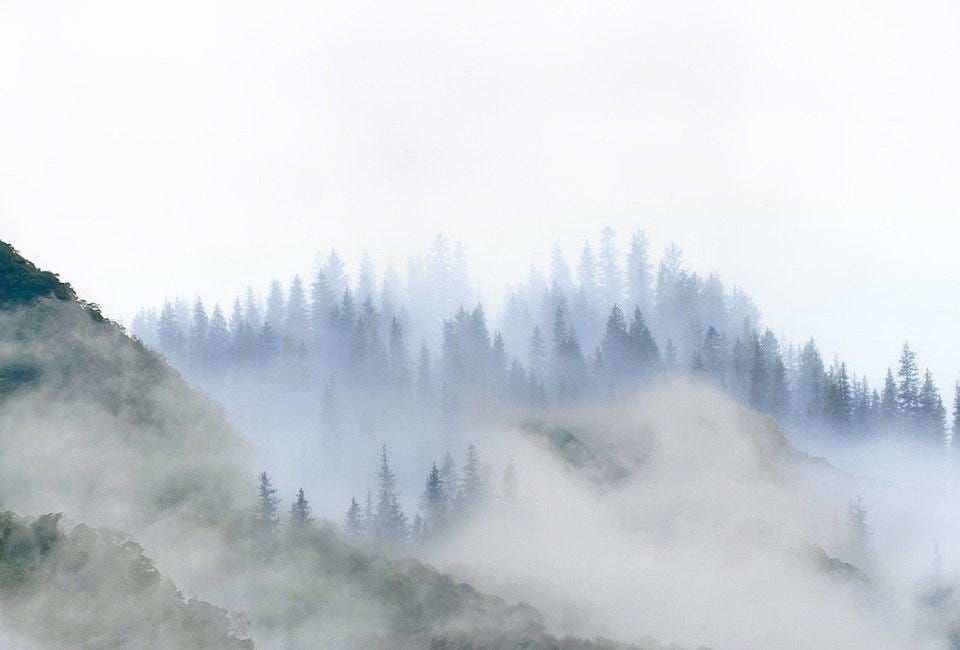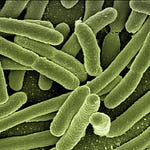Part 2: There's a Certain Chemistry to All This Biology
Therefore, whatever you eat or drink, or whatsoever else you do, do all to the glory of God.
-1 Corinthians 10:31, Douay-Rheims
If you have been learning about science very long, you might have taken offense at the idea that our bodies are made of cells. After all, you might say, everything is made out of atoms, so we must be made out of atoms, too. You are absolutely right, everything is made of atoms – extremely tiny particles (even smaller than cells) that bond together to make everything. Atoms come in quite a wide variety of elements, from hydrogen to organesson, and you can look at the periodic table of the elements to see all the different kinds. On it, you will notice that each element has a letter or two that represent it; scientists use this shorthand to talk about elements to save space. For living things, the most important elements are carbon, oxygen, hydrogen, and nitrogen.
Atoms bonded together in different ways form what we call compounds or molecules. Different kinds of compounds are what make the difference between salt (made of sodium and chlorine – NaCl as a chemist might say), sugar (made of carbon, hydrogen, and oxygen – C12H22O11), and a puppy (made of...well, a lot of different elements, even gold!).
Living things are mostly made of a certain type of compounds known as organic compounds, mostly carbohydrates, proteins, fats, and deoxyribonucleic acid (DNA). We also need vitamins, minerals, and water in order to stay healthy.
Wait! I bet you’ve heard of most of those things things before. If you look at almost any food packaging, you will find them listed on the back (go ahead and look, I’ll wait). These different types of compounds are listed there because we get them from food, and in order to stay fit it is important that we get them in the right amounts.
So what do all of those fancy words mean? Carbohydrates are a type of compound that is made of carbon (C) and water (H2O – hydrogen and oxygen). Carbohydrates are great for short-term energy storage (in sugars and starches) and providing structure (in cellulose that allows plants to grow tall). The basic building block of carbohydrates is known as glucose (C6H12O6); glucose molecules link up with one another to form chains of molecules. The longer the chain, the more complex the compound is and the longer it takes to digest. So, if it’s going to be a while before you can eat again, reach for the complex carbs in the oatmeal rather than the simple carbs in the doughnut.
Proteins are perhaps the most diverse group of organic molecules. They are made of carbon, hydrogen, oxygen, nitrogen, and occasionally sulfur. They provide structure (such as the cartilage in your ears), allow movement (through muscles), facilitate communication (with insulin in your blood), and many other things. The basic building block of proteins are called amino acids. When these amino acids are built into chains of proteins inside a cell, an absolutely amazing thing happens: what starts out as a squiggly string, folds and forms itself into an almost inconceivably complex shape. Even a small mistake in the folding will make the protein ineffective and even dangerous. This protein folding is so complex that scientists often cannot predict how a protein will fold, yet they automatically do it every day inside the cells of every creature on Earth.
Fats, or more precisely lipids, are made of carbon, hydrogen, and sometimes oxygen. Fats are often shunned in diets because of their amazing long-term fat storage ability, but it is important that we have a healthy amount of fat in our diets. Lipids often form cell membranes (the “wall” around a cell), and many hormones in our bodies are also made of lipids, including cortisol and estrogen, sending messages around the body. Fats are also important in helping us to get some of the vitamins that we need, since some can only be found there.
On the food package, you will also find a whole list of vitamins and minerals. These are both things that our bodies need that we can’t produce ourselves, everything from calcium to Vitamin E. Minerals are not organic compounds, and are often just single elements (magnesium, iron); vitamins, on the other hand, are organic compounds. Both are necessary in the right amounts to stay healthy.
Now, we come to the molecule that is not on the food package – DNA. It is arguably the most important type of molecule because it is the one that makes us….us. It encodes instructions that our cells read to carry out their jobs. DNA is made of hydrogen, oxygen, nitrogen, carbon, and phosphorous, but these simple elements combine to form the spiral staircase of life. In its twisting ladder, each strand of DNA holds the instructions for a particular creature, and everyone’s sequence is different (unless you happen to be an identical twin). Nearly every cell in your body has a strand of DNA about 6 feet (2 meters) long, but it is twisted up very tightly so that it is only about 6 microns long – that’s 10 times smaller than the thickness of a hair!
We cannot leave our little chemistry excursion without talking about one last molecule: water, that cool stuff to splash in at the lake or to take a bath in or to put in your soup. This substance may seem ordinary, but it is in many ways the elixir of life. Nearly everything in your body happens in water; in fact, even though water is not an organic compound, you are more than half water! Water is so important that it is absolutely essential for life as we know it (which is why scientists are always looking for water on Mars and other planets).
It is deceptively simple – just one oxygen and two hydrogens, but because of how molecules take their shape, it happens to be slightly positive on one side and negative on the other (think – the opposite ends of magnet), a property known as polarity. This means that adjacent water molecules are slightly attracted to each other (again, like two magnets). Polarity is responsible for making water flow, allowing it to creep up flower stems, giving it surface tension, keeping the bottoms of lakes from freezing, and other things that are critical to our world as we know it. Polarity also makes many things dissolve in water, giving us minerals in our water for our health and salt water in our oceans. Without water and its very special property of property of polarity, nothing that we know of would be alive on Earth – it is truly a miraculous molecule.
Ready for More?
Chapter 3: The Kingdoms of Archaea and Bacteria
Welcome to the first installment in the Kingdoms of Creation home education science program. We’re glad you’re here. Each chapter is split into two parts: Part 1 is for younger students (usually K-4); Parts 1 and 2 together are for older students (usually 5-8). The Kingdoms of Creation is a comprehensive biology program. See the full table of contents
Need Something Else?
Visit the Welcome Page
Welcome to the Kingdoms of Creation
A long time ago in land not so far away, the Creator made a world. This world was big and beautiful, wild and wonderful, fantastic and frightening. It was full of amazing creatures like the ping-pong tree sponge (an immobile creature that looks just like its name sounds but eats shrimp in the deep dark of the sea) and the dragon mantis (a large brown …
Or Check Out the Original Post
Chapter 2: What Is a Creature?
Welcome to the first installment in the Kingdoms of Creation home education science program. We’re glad you’re here. Each chapter is split into two parts: Part 1 is for younger students (usually K-4); Parts 1 and 2 together are for older students (usually 5-8). The Kingdoms of Creation is a comprehensive biology program. See the full table of contents
















Share this post